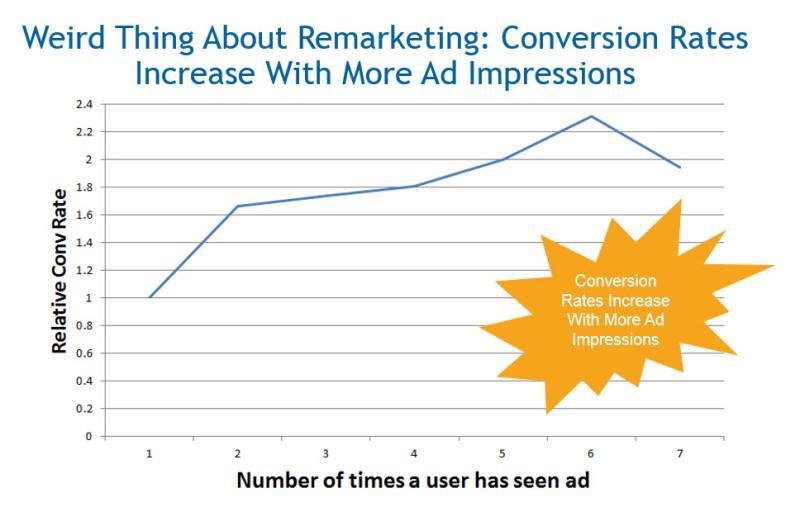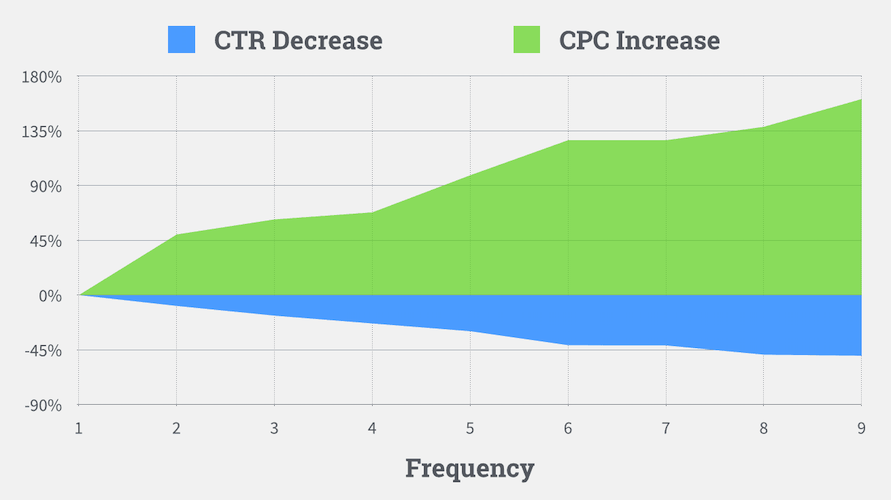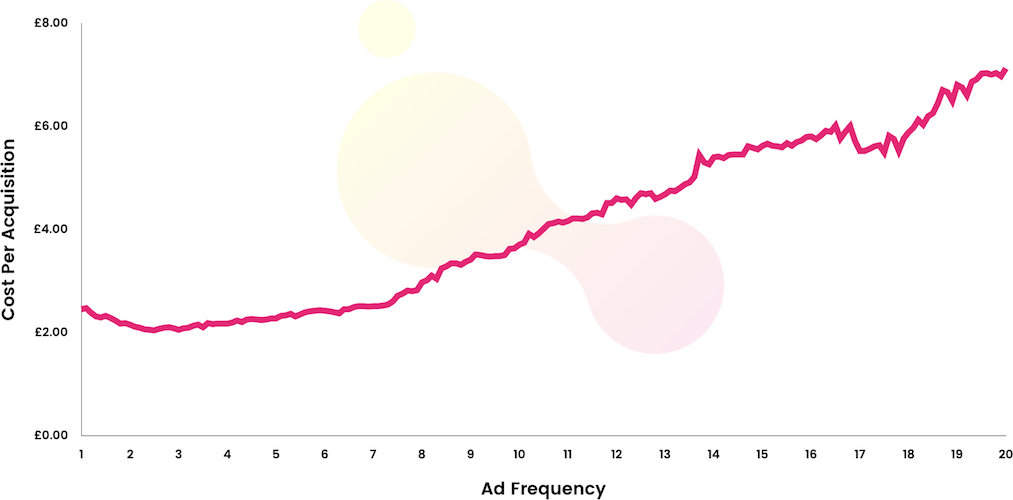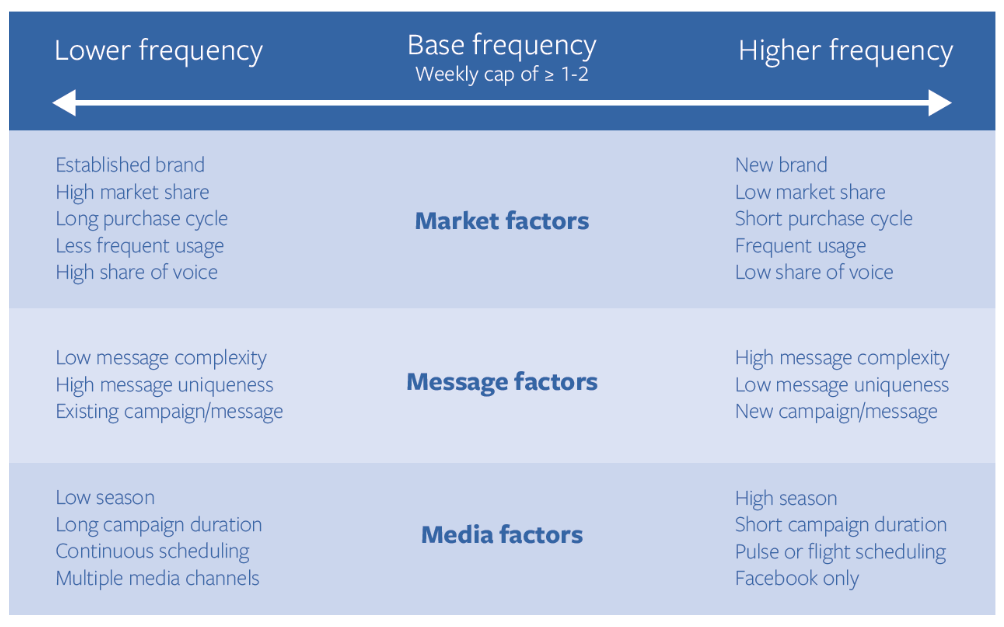On the Google ad network, you want to reach your customers, but you don’t want to overreach. So, how many times should they see your ad? Once a day? Ten times?
What’s the magic number?
It’s a delicate balance to reach, and getting there isn’t easy. You want prospects to see your ads. You want to get them to engage, but overexposing them to your message can have the opposite effect.
That’s why the frequency cap in Google ads can be a campaign-saving feature.
What is frequency capping in Google Ads?
Frequency capping in Google ads refers to the practice of limiting the number of times each member of your audience sees your ad in a given time frame. For example, setting a frequency cap of 3 impressions every 24 hours means that a member of your audience can only see your advertisement a maximum of three times every day. Google Ads customers can use the frequency cap feature on their display and video campaigns, but not for ads on the search network.
According to Google, setting a frequency cap for a display campaign means putting a limit on the number of impressions per user in a given day, week, month, or any combination. You can set a frequency cap to limit the number of impressions on the campaign, ad group, or ad.
For display campaigns, only impressions that are viewable count towards frequency caps. So, frequency reporting data may look higher than your frequency caps because it is counting both viewable and unviewable impressions.
For video campaigns, a frequency cap will limit the number of times a unique visitor sees a video ad. Similarly, they can be set per day, week, month, or any combination. And they can only be set on the campaign level.
If the videos you set a cap for are in other video campaigns, impressions from those campaigns for a given user will count towards the frequency cap. This only applies to in-stream and bumper ads.
Why would you want to set a frequency cap?
When KPIs take a dive, it’s common to assume your campaign is out of steam: that creative needs to be refreshed, or the offer needs to be updated. Or, maybe, that your ads have run their course and they can’t produce more results.
Any of those may be true. But, there may also be another cause: a problem with frequency. Here’s Google on why reach and frequency are important to track:
By analyzing reach and frequency data for display and video campaigns, you can better understand how many people were shown your ads and how frequently the same people were shown them over a certain period of time. Whether you’d like to focus on reinforcing a message or on reaching new people, this information can help you get a clearer picture of how you’re meeting your reach goals.
Indeed, knowing reach and frequency numbers can help you optimize your campaigns. And when they’re too high or low, it can cause major issues with KPIs. But, how you correct them depends on what you want to accomplish.
Reach refers to the number of unique users your ad campaign reaches. If two total people see your ad three times each, your reach is two.
Frequency refers to the number of times each of those users has seen your ad in a given time period. If the average member of your target audience sees your ad three times every 24 hours, your frequency is 3.
In cases when frequency becomes excessively high or low, it can cause problems with your campaign. Budget may go wasted, impressions may go wasted, and viewers may get tired of your ads. With a frequency cap, you can prevent these issues. In its article on frequency and reach, Google names the two most common reasons for setting a frequency cap: reaching new users and reinforcing a message.
Reaching new users with frequency cap
At the top of your funnel, the goal is to maximize input and slowly narrow down prospective buyers with qualification throughout the journey. At this point, you’re casting a wide net with a light offer — like an ebook or an audit — and hoping to catch the interest of a prospect.
This strategy involves showing your ad to a lot of people just a few times as opposed to a few people a lot. The reason is simple: If your goal is brand awareness, your audience is cold. It’s likely not familiar with your brand, and this top-of-funnel offer is meant to introduce your business and gauge interest.
For a campaign like this, a low-frequency cap is valuable for broadening reach. Without a frequency cap, your ad may get shown to one user several times a day. At such an early stage, this can result in ad fatigue, and may turn a visitor off to your brand.
Say, for example, you have a high budget and a very narrowly defined audience. It’s likely your ad will be shown more to each member of that small audience before the platform can spend your full budget. On a very small scale: If your audience has 500 people, and your budget is $100 a day, it won’t be long before your ad is shown to every member of that audience. To exhaust your budget, the platform continues to show the ad. However, since it has nobody new to show it to, it shows it to the members of your audience again.
This is what can result in ad fatigue, which is essentially overwhelming a prospect with a particular ad campaign. To keep ad fatigue to a minimum, you can set a frequency cap and/or target a broad audience.
Then again, ad fatigue affects audiences differently. Your brand, offer, ad creative, and other factors, will determine how willing your visitors are to tolerate your ad.
Reinforcing a message with frequency cap
While it may make sense to keep frequency low at higher stages of the funnel, that’s not the case for lower stages. Prospects who know your brand and have expressed interest in your content generally have a higher tolerance for your branded messages. Ad fatigue sets in later. And that’s especially true in retargeting campaigns.
Though many assume the more a prospect sees an ad, the more “creeped out” they get by the campaign, research has shown the opposite:

To a point, the more users see a retargeting ad, the more likely they are to convert. Twice as likely, according to WordStream. Larry Kim, WordStream founder, says:
Understand that people are busy and have other stuff going on in their life. Remarketing gives people a gentle reminder to finish what they started on your site while reinforcing your branding and messaging to that user every time they see you around. They’re getting to know you, and learning to trust you, and when they finally do have a free moment, they are increasingly likely to do business with you.
At a lower stage of the funnel, you may want to increase your frequency cap for these “gentle reminders” to test Kim’s theory. You may also find that your data doesn’t support this research.
On Facebook, AdEspresso found that as frequency increased, CPC increased while CTR decreased:

Social Media Today found something similar in their analysis of 10,000 Facebook ads:

Of course, these samples weren’t sorted by campaign type or goal, so we can’t make any inferences about retargeting. And even if we could, should we? Can we determine the best frequency cap from someone else’s data?
How do you determine the best Google ad frequency cap?
Experts say high frequency for lower parts of the funnel, and low frequency for higher, but they also make it clear that ad fatigue, reach, ROI, budget, are all impacted differently depending on the situation. So, how do you determine which frequency is best?
“Every advertiser is different,” says Scott Tienan, Global Lead of Programmatic at Accenture Interactive. “Advertisers should develop their own method for defining an optimal frequency. This should be tested along with third-party measurement partners who have the ability to measure impact on business metrics.”
Unfortunately, there’s no one-size-fits-all advice when it comes to frequency. While Tienan recommends you always use some form of frequency capping, he also clarifies that the only way to discover how to use it is to test each campaign. He adds:
Marketing best practices encourage tailoring frequency caps for different user journey stages, which requires differentiating levels of user interest and engagement with the brand.
Applying a blanket frequency cap for audiences can lead to spend inefficiencies, as users who have expressed interest in the brand are more likely to be receptive to higher exposure levels compared to those without existing brand knowledge.
Not only is there no perfect answer, but those who claim to have the answer could be doing you a disservice. Even if one campaign succeeds with a frequency of 95 (yes, that’s happened), does that mean it will work for you? No. It might, but there’s no guarantee.
On Facebook, a handy chart helps advertisers decide how to approach frequency, and in some places it contradicts the advice of others:

While you can take the market, message, and media into account, as well as the research from AdEspresso and WordStream, what it comes down to is this: Their campaign is not yours.
And even if you do have your own numbers — even if one of your own campaigns has succeeded with a frequency cap at 20, that doesn’t mean the next campaign will, no matter how similar it may seem. It may serve as a good starting point, but it’s always important to test.
How to set a frequency cap on a new campaign
If you’re a Google advertiser, you can use the frequency cap feature in video and display campaigns. Here’s how:
- Sign in to your Google Ads account.
- Select All campaigns in the navigation panel.
- Click Campaigns in the page menu.
- Click the + button and select New campaign.
- Select your campaign goal and click Continue.
- Select your campaign types and click Continue.
- Click Additional settings.
- Select Frequency capping.
- Enter the number of impressions (or views for video campaigns).
- Select a time interval (per day, week, month, or a combination).
- Once the rest of your campaign is set up, click Create campaign.
How to set a frequency cap on an existing campaign
Frequency caps don’t need to be set in the middle of a Google campaign. They can be set and adjusted on existing campaigns, too. Here’s how:
- Sign in to your Google Ads account.
- Select All campaigns in the navigation panel.
- Click the name of the campaign to be delivered.
- Select Settings in the page menu.
- Click Additional settings.
- Select Frequency capping.
- Enter the number of impressions (or views for video campaigns).
- For display campaigns only, select a time interval (per day, week, or month).
- Click Save.
Google ad frequency capping is no silver bullet
As is the case with any individual metric, frequency only tells part of the story. Setting a frequency cap won’t solve all your problems. It should only be one tactic that helps keep your ads effective. Tienan adds:
As best practice, creative should always be rotated throughout the campaign lifecycle. Creative messaging plays an important role in guiding audiences through the customer journey. Frequency caps should align with the creative rotation to ensure audiences are being served with the desired ads at the right level.
Other potential solutions include audience segmentation, A/B testing, personalization, and optimization to improve the ROI of your advertising campaigns. To learn more Instapage 14-day free trial today.

Try the world's most advanced landing page platform with a risk-free trial.
